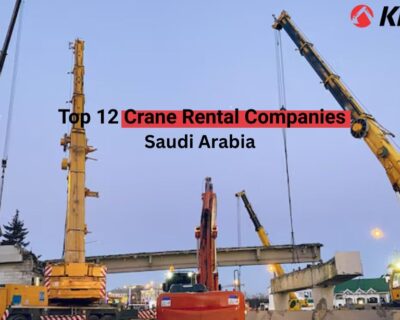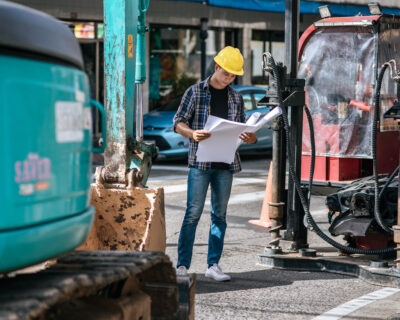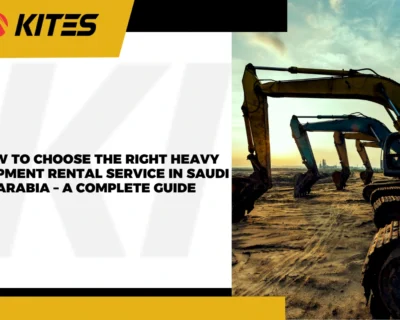
What Is a Telehandler Forklift
A Telehandler, also known as a telescopic handler, is a remarkably versatile piece of heavy equipment. It seamlessly combines the functionalities of a forklift and a crane, featuring an extendable boom that can lift and place loads at various heights and distances. This adaptability makes it an ideal choice for a wide range of tasks, from construction and agriculture to warehousing and industrial settings.
Few machines can match a telehandler’s efficiency and adaptability when it comes to heavy lifting and versatile material handling. But what exactly is a telehandler, and how can it benefit your business? Here you can explore everything you need to know about telehandlers, including their uses, benefits, and how they compare to traditional forklifts. We’ll also dive into whether renting or buying a telehandler is the right choice for your business and how to choose the right attachments for your needs.
Where Is a Telehandler Mostly Used?
Telehandlers are incredibly versatile and can be found in a variety of industries. Here are some of the most common applications:
Construction Sites: Telehandlers lift and transport materials such as steel beams, concrete blocks, and roofing supplies to elevated areas.
Agriculture: Farmers use telehandlers to lift hay bales, move feed, and handle heavy equipment.
Warehousing: Telehandlers help stack and retrieve pallets from high shelves in large warehouses.
Industrial Settings: Factories and manufacturing plants use telehandlers to move heavy machinery and materials.
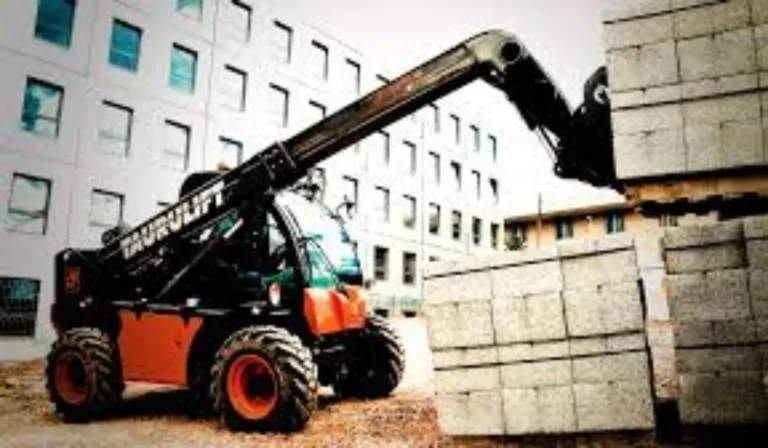
How Does a Telehandler Work?
A telehandler operates through a hydraulic system that extends and retracts its boom. The operator controls the machine from a comfortable cab, using joysticks and pedals to maneuver both the boom and any attached implements. Stability is a key feature during lifting operations; stabilizers ensure that the machine remains steady while handling heavy loads. Additionally, the four-wheel drive system allows for smooth movement across various terrains, enhancing overall operational efficiency.
Key Components of a Telehandler
Understanding the key components of a telehandler can help you operate it more effectively.
The Cab
The cab is the control center of the telehandler, equipped with ergonomic controls that are designed for operator comfort and safety features such as seat belts and roll-over protection structures. It often includes climate control for operator comfort during long working hours.
Extendable Boom
The extendable boom is a telehandler’s defining feature, allowing it to reach heights and distances that traditional forklifts cannot.
Attachments
Attachments like forks, buckets, and winches enhance the telehandler’s versatility, enabling it to perform a wide range of tasks. These attachments are additional tools that can be added to the telehandler’s boom, allowing it to perform tasks beyond its basic lifting and placing functions.
Telehandler vs Forklift – Which One Do You Need?
When choosing between a telescopic handler and a forklift, it’s essential to understanding each of their features and applications is crucial for making an informed decision.
Key Differences
Reach and Lifting Capability: Telehandlers are equipped with an extendable boom that allows them to reach significantly greater heights and distances compared to traditional forklifts. While forklifts generally lift loads vertically, telehandlers can maneuver loads in various directions, including forwards, backwards, and sideways. This versatility makes telehandlers akin to mini cranes, capable of handling complex lifting tasks.
Versatility: Telehandlers can be connected with a wide range of attachments such as buckets, forks, and winches, enhancing their functionality across different tasks. In contrast, forklifts typically have limited attachment options, primarily using standard forks for lifting.
Terrain Adaptability: Telehandlers are specifically designed to operate on rough and uneven terrain, making them ideal for construction sites and outdoor environments. Forklifts, however, are best suited for flat, stable surfaces like warehouses or factories where space is often confined.
When to Choose a Forklift
Indoor Operations: If your work is primarily conducted indoors or on flat surfaces with limited space.
Simple Material Handling: If you require a machine mainly for straightforward lifting and transporting pallets or materials without the need for extensive reach or versatility.
Cost Efficiency: Forklifts are generally more affordable and have lower operating costs compared to telehandlers, making them a practical choice for many businesses.
When to Choose a Telehandler Forklift
Height and Reach Requirements: If your tasks involve lifting materials to significant heights or across long distances.
Rough Terrain Operations: If you are working in environments with uneven or rugged ground where stability is essential.
Multi-tasking Needs: If you require a machine that can handle various tasks with different attachments, increasing operational efficiency on site.
Both telehandlers and forklifts serve important roles in material handling but cater to different needs based on their capabilities. Assessing the specific requirements of your project will help determine which equipment is the most suitable for your operations.
Renting vs. Buying a Telehandler – What’s Best for Your Business?
Deciding whether to rent or buy a telehandler is a significant consideration for businesses, influenced by factors such as operational needs, budget constraints, and how often the equipment will be utilized.
Who Should Buy a Telehandler
Frequent Users: Businesses that require telehandlers on a regular basis or for long-term projects will benefit from purchasing their own equipment. Ownership allows for immediate access whenever needed without the constraints of rental availability.
Budget for Investment: Companies with the financial capacity to invest in heavy machinery, including the associated maintenance and operational costs, should consider buying. This option provides long-term value and control over the equipment.
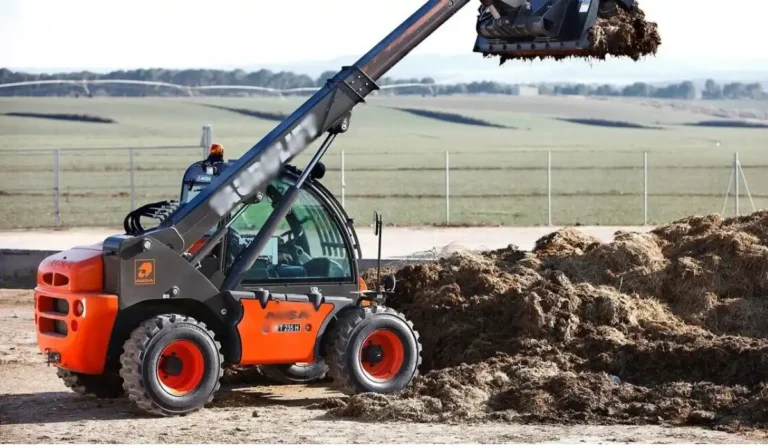
Who Should Rent a Telehandler
Short-Term or Seasonal Projects: If your business undertakes projects that are temporary or seasonal in nature, renting is often more economical. This approach allows companies to access the necessary equipment without committing to a long-term investment.
Avoiding Upfront Costs: Renting can help businesses sidestep the significant initial expenses of purchasing a telehandler. Additionally, it alleviates the burden of ongoing maintenance responsibilities that come with ownership.
Benefits of Renting from Kites Equipment Rental Service
Access to Modern Equipment: Renting provides access to the latest telehandler models equipped with advanced features, ensuring that businesses can utilize state-of-the-art technology without the need for a hefty investment.
Flexible Rental Terms: Kites Equipment Rental Service offers flexible rental agreements tailored to your project timeline, allowing you to rent equipment for as long as necessary without being tied down by ownership.
No Long-Term Commitment: Renting eliminates the long-term financial commitment associated with buying equipment. This flexibility is particularly beneficial for businesses that may need to adjust their operations based on changing demands.
Additional Considerations
When weighing the options of renting versus buying, businesses should also consider:
Cash Flow Management: Renting can help maintain cash flow by reducing upfront costs and spreading expenses over time. This is especially advantageous for startups or small businesses with limited capital.
Maintenance and Repair Costs: Owning equipment means taking on all maintenance and repair responsibilities. In contrast, rental companies typically handle these aspects, allowing businesses to focus on their core operations without worrying about unexpected breakdowns.
Trial Opportunities: Renting can serve as a trial period for businesses considering a purchase. It allows them to assess the telehandler’s performance and suitability for their specific needs before committing to a significant investment.
The decision to rent or buy a telehandler should align with your business’s operational requirements and financial strategy. By carefully evaluating these factors, you can make an informed choice that best supports your business objectives.
Benefits of Using a Telehandler
Telehandlers are increasingly recognized for their numerous benefits, making them an essential piece of equipment on various worksites. Their unique design and multi capabilities allow them to perform a wide range of tasks efficiently.
Different Attachment Options
One of the standout features of telehandlers is their ability to have a variety of attachments. These include forks, buckets, winches, and jibs, which enable the telehandler to execute multiple functions with just one machine. This versatility not only enhances productivity but also reduces the need for multiple pieces of equipment, streamlining operations on construction sites or agricultural fields.
Performance in Any Environment
Telehandlers are engineered for robust performance in challenging environments. Their four-wheel drive capability allows them to navigate muddy, uneven, or rocky terrains with ease. This makes them particularly valuable in construction and agricultural settings where ground conditions can vary significantly. The ability to operate effectively in such conditions ensures that projects can proceed without delays caused by equipment limitations.
Extended Reach and Full Range of Motion
The telescopic boom of a telehandler provides exceptional reach and flexibility. Operators can extend the boom both vertically and horizontally, allowing for precise placement of loads exactly where they are needed. This capability is especially advantageous on construction sites where materials must be lifted to higher floors or maneuvered over obstacles. The full range of motion enables operators to handle tasks that would be difficult or impossible with traditional forklifts.
Choosing the Right Attachments for Your Job
Selecting the proper attachment is crucial for maximizing the efficiency of your telehandler. Here are some standard attachments and their uses:
Forks: Ideal for lifting and transporting pallets or materials.
Bucket: Used for moving loose materials like dirt, gravel, or sand.
Winch: Helps with pulling or lifting heavy objects.
Jib: Extends the reach of the telehandler for precise placement of loads.
Choosing the proper attachment ensures your telehandler is ideally suited to the task.
A telehandler is a powerful and versatile machine that can significantly enhance productivity and efficiency on your worksite. Whether lifting heavy materials, reaching great heights, or working in challenging environments, a telehandler is up to the task. By understanding its uses, benefits, and how it compares to other equipment like forklifts, you can decide whether to rent or buy one for your business. With the right attachments, your telehandler can become an indispensable tool for various applications.
If you’re considering a telehandler for your next project, explore your options with Kites Equipment Rental Service to find the perfect solution for your needs.



